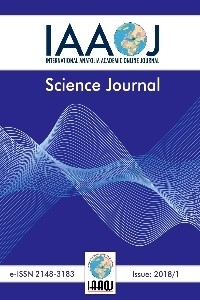MADDE YANIT TEORİSİ İLE ÜNİVERSİTEYE GEÇİŞ DENEME SINAVINA GİREN ÖĞRENCİLERİN DEĞERLENDİRİLMESİ
Madde yanıt teorisi kategorik olarak puanlanmış maddelerin kümesini bireylerin davranışları ile ilişkilendiren istatistiksel bir model sınıfıdır. Klasik test teorisinin açıklayamadığı, bireylerden bağımsız madde puanlaması ve maddelerden bağımsız yetenek ölçümlerini elde etme olanağı sağlamıştır. Yani madde yanıt teorisine göre, ölçülen yeteneğin hem seçilen maddelerden hem de testi cevaplayan kişilerin performansından bağımsız olduğu öne sürülmektedir. Madde yanıt teorisinde bir testin özelliklerini testi uygulamadan önce kestirmek mümkündür. Genellikle klasik test teorisine göre daha üstündür.Aynı zamanda madde yanıt teorisi, klasik test teorisine göre daha güçlü varsayımlar gerektirir. Bu çalışmada bir üniversiteye geçiş deneme sınavından elde edilen veriler, madde yanıt teorisi ile analiz edilmiştir. Analiz sonucunda, madde zorluk parametreleri, madde ayırıcılık parametreleri ve kişi yetenekleri incelenmiştir.
USE OF ITEM RESPONSE THEORY ON UNIVERSITY ENTRANCE PILOT EXAM FOR EVALUATING THE STUDENTS ABILITY
Item response theory is a statistical model class that associate item cluster that a rescored as categorical with an individual's behavior. Item response theory provides to obtain independent item scoring and independent item ability observation sindividually. According to item response theory, it is possible to predict the characteristics of test before applying the test. Therefore, item response theory is superior to classical test theory. In other word, according to the item response theory it is proposed that them easuredability is independently of both performance of people that are responded the test and the items that are selected. However, item response theory is required more powerful assumptions the classical test theory. Inthisstudy, data obtained from university entrance pilot exam was analyzed with item response theory. Parameters of item difficulty, parameters of item discrimination, item characteristic curve sandabilities of person analyses are explored.
